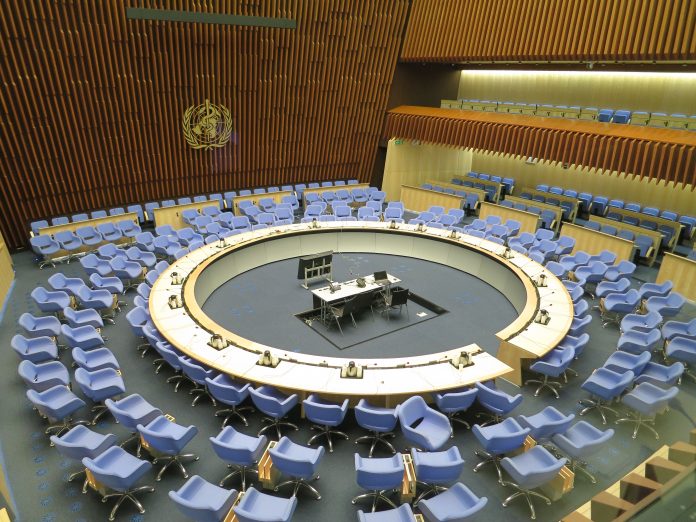On Thursday 24 January, the World Health Organization’s 144th Executive Board meeting will kick off in Geneva. One of the agenda items is access to cancer medicines. In 2017, the World Health Assembly in resolution WHA70.12 asked the WHO Secretariat:
“to prepare a comprehensive technical report to the Executive Board at its 144th session that examines pricing approaches, including transparency, and their impact on availability and affordability of medicines for the prevention and treatment of cancer, including any evidence of the benefits or unintended negative consequences, as well as incentives for for investment in research and development on cancer and innovation of these measures, as well as the relationship between inputs throughout the value chain and price setting, financing gaps for research and development on cancer, and options that might enhance the affordability and accessibility of these medicines.”
This request should not surprise anyone. Governments the world over struggle with the high price of cancer medicines and the lack of appropriate treatments. They are also confronted with strong industry lobbies to ensure those prices remain high. See for example Roche’s attempt in Sri Lanka to prevent the registration of biosimilar versions of trastuzumab, a WHO essential medicine for the treatment of HER2 positive breast cancer. Roche claimed that Sri Lanka does not have a legal framework to register a biosimilar. Roche’s legal challenge failed in this case. Or the recent case in the Netherlands where Novartis increased the price of a cancer drug, developed by Dutch doctors, riding the market exclusivity of the orphan drug status of the product.
The WHO technical report is now tabled for discussion this week at the Executive Board and it is packed with data, solid analysis, and actionable recommendations. KEI posted a useful summary of key findings here.
High cancer drug pricing is a global crisis. But people in low and middle income countries are most affected. The WHO report points out that a course of standard treatment for early stage HER2 positive breast cancer (doxorubicin, cyclophosphamide, docetaxel, trastuzumab) would cost about 10 years of average annual wages in India and South Africa. In the US, this would be 1.7 years.
Industry will be quick to say that the high prices are needed to ensure financing for the development of new medicines. But a key conclusion of the WHO analysis suggests:
…that the costs of R&D and production may bear little or no relationship to how pharmaceutical companies set prices of cancer medicines. Pharmaceutical companies set prices according to their commercial goals, with a focus on extracting the maximum amount that a buyer is willing to pay for a medicine. This pricing approach often makes cancer medicines unaffordable, preventing the full benefit of the medicines from being realized.
And goes on to conclude:
Concerns that lower cancer medicine prices might impair future R&D seem misplaced because evidence suggests that (a) prices of cancer medicines bear little or no relationship with R&D costs; (b) financial returns of cancer medicines are high; (c) potential impact on revenue due to lower prices could be offset by higher volume, especially when the marginal cost of production is low; and (d) governments and the non-profit-making sector have made substantial contributions to the R&D of medicines through direct funding and other incentives.
The report makes a set of recommendations to enhance the affordability and accessibility of cancer medicines, that are sound and practical in the following areas:
- strengthening pricing policies at the national and regional levels;
- improving the efficiency of expenditure on cancer medicines;
- improving the transparency of pricing approaches and prices of cancer medicines;
- promoting cross-sector and cross-border collaboration for information-sharing, regulation and procurement;
- managing factors that would influence the demand for cancer medicines; and
- realignment of incentives for R&D.
The report provides a time table for implementation and identifies the key actors, including roles and responsibilities for the pharmaceutical industry. (It is really worthwhile having a look at those tables in the report.)
But it looks like pharma already has the knives out. IFPMA director, Thomas Cueni, was quick to slam the report. In an interview with Politico he said that it “was based on deeply flawed assumptions of how the industry operates” and showed little appetite to take on the recommendations the report makes for the industry.
This response is not going to get us anywhere, and points to the urgent need for governments to act and increase collaboration to tackle the issue of high medicines pricing. As a first step, implementing the call for greater cost and price transparency would be an important one. If pharma is worried about wrong assumptions surely they should support the call for greater transparency and disclosure of cost data.
Ellen ‘t Hoen, LLM PhD, is a lawyer and public health advocate with over 30 years of experience working on pharmaceutical and intellectual property policies.
